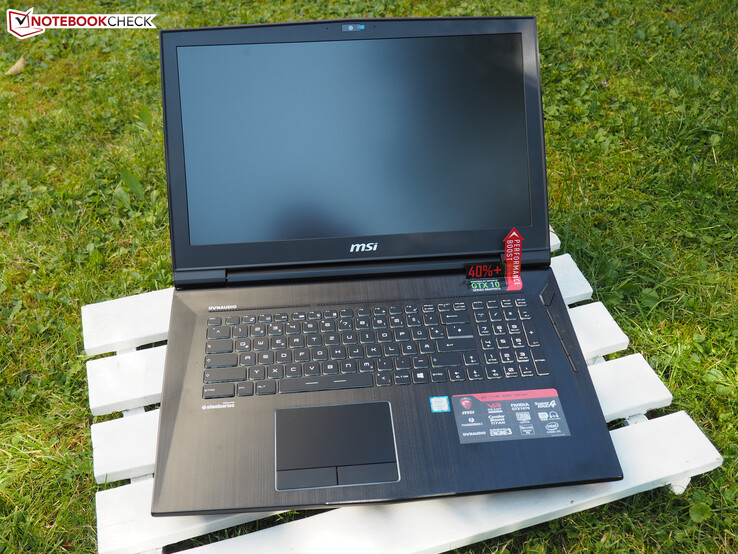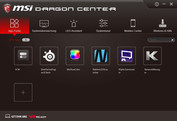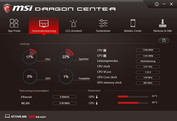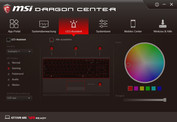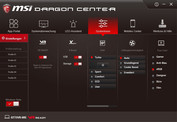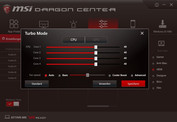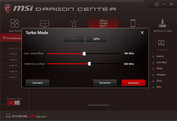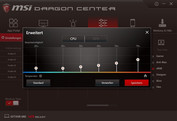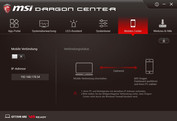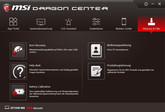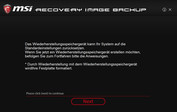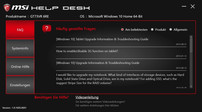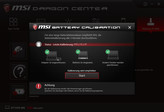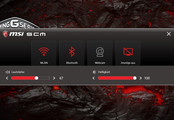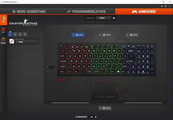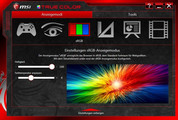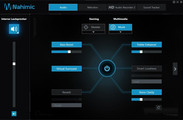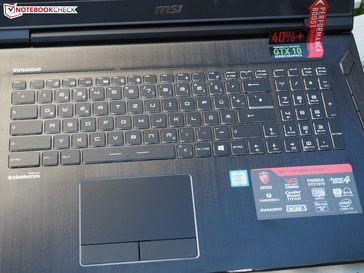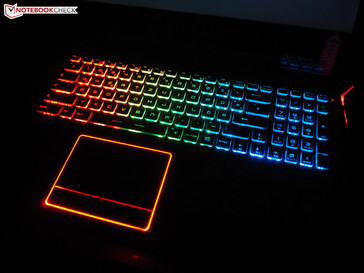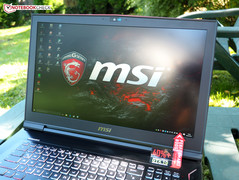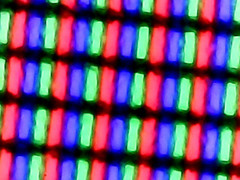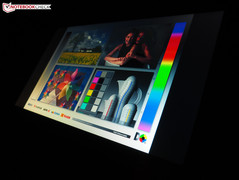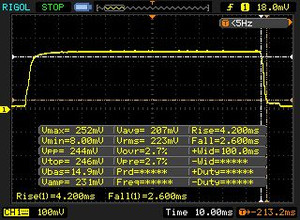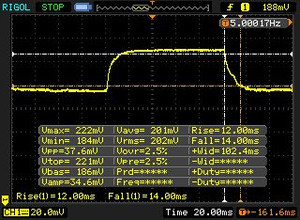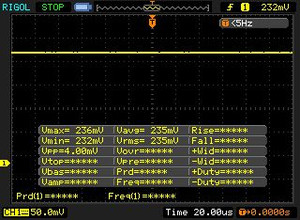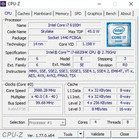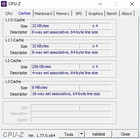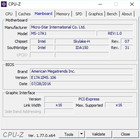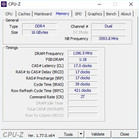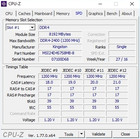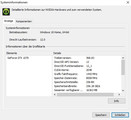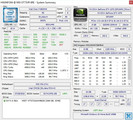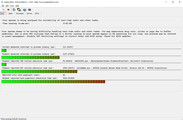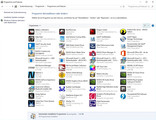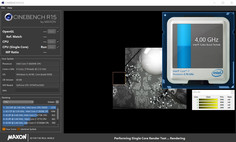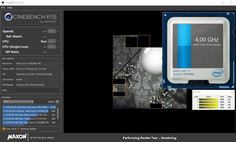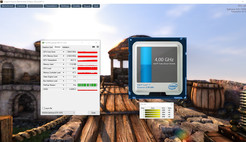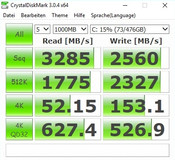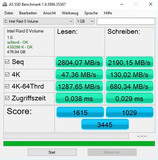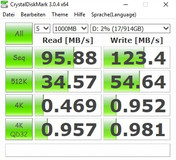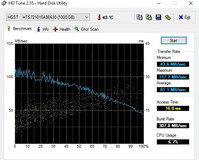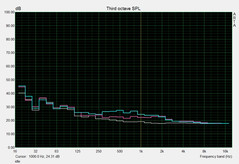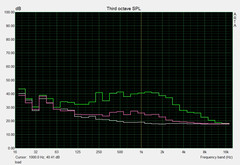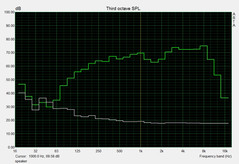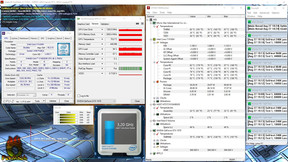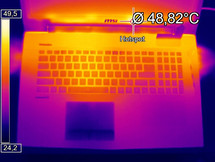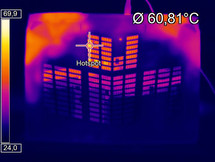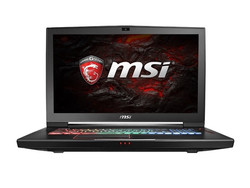MSI GT73VR 6RE Titan Notebook Review
For the original German review, see here.
The manufacturer MSI is a gaming notebook expert and offers a suitable product for almost every taste and price. If you are often on the road and therefore prefer a thin and light notebook, you should have a look at the GS-series. The recently tested GS73VR 6RF (83%) with a height of just 20 millimeters is still equipped with a GeForce GTX 1060.
If you plan to use the system stationary most of the time, you should be happy with the GT-series. The GT72VR 6RE (87%) we tested mid-August was our first 17-inch notebook based on the GeForce GTX 1070. The GT73VR 6RE is even better equipped with a Core i7-6820HK (GT72: Core i7-6700HQ) as well as an optional 4K screen. Some SKUs of the 17-inch monster are also available with a GeForce GTX 1080 or even two GPUs in an SLI system to justify the bulky chassis.
Our test model GT73VR-6RE16SR451 is pretty much the base model, but this does not mean the gaming system would be cheap. MSI charges a hefty 2,900 Euros (~$3264) for the base model. For this money you will get 16 GB DDR4-RAM, a GeForce GTX 1070, a Full HD display with 120 Hz and two 256 GB NVMe-SSDs in RAID 0 (plus a secondary 1 TB HDD).
There is definitely no shortage of rivals for the high-end notebook. The biggest competitor in the 17-inch segment is the Asus G752VS, which also features factory overclocking and similar dimensions. The third Pascal notebook in this comparison is the GT72VR (not overclocked). We also add two slightly older gaming notebooks based on Nvidia's Maxwell generation. The Schenker XMG U726 and the Asus GX700 were equipped with the former top model GeForce GTX 980.
More information about MSI's lineup is available in our news article.
Case
The GT73VR is clearly designed to be a desktop replacement. With a thickness of 4.9 centimeters and a weight of 4.1 kilograms, the gaming notebook is one of the bulkier systems, although MSI uses the available space pretty well and implements a particularly powerful cooling solution.
The construction of the GT73VR is similar to the 18-inch sibling GT83VR, which is also designed for SLI, but it is also much heavier and more expensive. Similar to most competitors, MSI decided to use a dark color scheme for the whole chassis, but there are some red accents (Dragon logo, stripes, fan covers, etc.). The fan exhausts at the rear could have been inspired by a fighter jet or sports car. The author immediately thought about the Lamborghini Aventador when he saw the fancy shape.
While the display frame and the bottom panel of the base unit are made of plastic, both the lid and the top of the base unit are made of brushed aluminum. The latter massively improves the quality impression and creates a nice structure.
We would call the stability good up to very good. Even a lot of pressure does not really dent the base unit, which is also a result of the lacking optical drive. The display cover provides decent stability for a notebook.
The build quality also leaves a good impression at first. A closer look, however, did reveal some smaller irregularities (some issues with material transitions), but they are not important in practice. There are no creaking sounds when you use the GT73VR. MSI should adjust the hinges a bit. Even though it requires some force to open the lid, the screen still tends to wobble when there are vibrations. This is moaning on a high level though.
All things considered, the case gets a "good" rating. Whether you like the design is obviously a matter of taste. The GT73VR appears pretty bulky for a device from 2016. We would also appreciate seeing some optimizations in regard to the construction. Because of the angled front and rear of the case, it is tricky to identify and reach the rear ports and status LEDs.
Connectivity
Ports
The port selection can completely meet the expectations at this price range. MSI only implements one USB 3.1 Type-C port, but it does support Thunderbolt 3, which gives you a lot of possibilities (like eGPUs, for example). Furthermore, you get 5x USB 3.0 ports (Type-A) as well as four audio jacks (7.1 analog or S/PDIF), which is also pretty generous.
The video outputs are typical for a gaming laptop. You can attach external monitors via Mini-DisplayPort and HDMI. It is unfortunate that MSI only implements an HDMI 1.4 instead of 2.0 port, so external 4K monitors cannot be driven at 60 Hz. This is only possible via USB 3.1 and Mini-DisplayPort in this case.
We have to criticize the heat from the fans. To improve the cooling performance, the warm air is dissipated to the rear and also the sides, so the mouse hand can get pretty warm during gaming. Speaking of the mouse: Because of the layout with some ports pretty far to the front, there can be collisions with cables.
SD-Card Reader
The GT72VR already showed MSI is using pretty fast card readers for its high-end models. 196 MB/s in the AS SSD sequential read test and 155 MB/s when we transfer jpg pictures are great results, which are only beaten by a few high-end notebooks like the Schenker XMG U726, for example. The Asus G752VS only managed 86 and 76 MB/s with the reference card (up to 260 MB/s).
| SD Card Reader | |
| average JPG Copy Test (av. of 3 runs) | |
| Asus GX700 | |
| Schenker XMG U726 | |
| MSI GT73VR-6RE16SR451 | |
| MSI GT72VR 6RE-015US | |
| Asus G752VS-XB78K | |
| maximum AS SSD Seq Read Test (1GB) | |
| Asus GX700 | |
| Schenker XMG U726 | |
| MSI GT73VR-6RE16SR451 | |
| MSI GT72VR 6RE-015US | |
| Asus G752VS-XB78K | |
Communication
MSI does not make any compromises in terms of communication, either. Wired connections are handled by the Gigabit Ethernet controller Killer e2400, which was specifically designed for gaming. The same applies for the wireless adapter Killer Wireless-n/-a/ac 1535, which supports all modern WLAN standards including ac as well as Bluetooth 4.1. Our networking test determines a very good wireless performance for the GT73VR. Almost 500 Mbps send and 600 Mbps receive (router ~1 meter away) beats many gaming notebooks. The Intel module Wireless-AC 8260 inside the Asus G752 only managed 465 and 566 Mbps, respectively.
| Networking | |
| iperf Server (receive) TCP 1 m | |
| MSI GT73VR-6RE16SR451 | |
| Asus G752VS-XB78K | |
| iperf Client (transmit) TCP 1 m | |
| MSI GT73VR-6RE16SR451 | |
| Asus G752VS-XB78K | |
Accessories
There are not many accessories. Except for the 230-Watt power adapter (17 x 8.5 x 3.5 centimeters) with a weight of 772 grams, the box only reveals a cleaning cloth, a quick-start guide, a warranty brochure and a recovery manual. DVDs or USB drives with drivers or the operating system, respectively, are not included.
Software
The software additions are much more comprehensive. MSI ships the system with a lot of tools, including the Norton Security package, XSplit Gamecaster (premium license for one year) or the limited trial version of Microsoft's Office 365.
However, the majority of the software is from MSI. The most important tool is the so-called Dragon Center, which was heavily reworked and got new features over the last couple of months. The clear interface shows six tabs, starting with A like App Portal (quick access to important applications) all the way up to T like Tools and Help (recovery, battery calibration, manual, etc.).
The menus Monitoring, LED Assistant and System Tuner are particularly interesting. While the former gives you information about the load, temperature, fan speed, and clocks, you can adjust the 3-zone illumination of the keyboard via LED Assistant. Most options are available in the System Tuner. Besides the True Color technology (adjusts the picture to different scenarios), we should also mention the Shift mode. The setting "Turbo" will overclock the Core i7-6820HK (2.7-3.6 GHz) to a steady 4.0 GHz and the GeForce GTX 1070 from 1443-1645 MHz (core) and 4000 MHz (memory) to 1543-1745 and 4200 MHz, respectively. The fan controls for the CPU and GPU fan can be adjusted as well.
Our measurements were performed with the fan speed setting "Auto". We used the Shift mode "ECO" for the idle tests, "Sport" for the 3D tests (system noise, temperature, power consumption) and "Turbo" (benchmarks).
Maintenance
The maintainability of the GT73VR is excellent. Almost the entire bottom panel was designed as a maintenance hatch. Contrary to other notebooks and manufacturers, respectively, you do not have to loosen dozens of screws to access the internals. Thanks to several fixation hooks, which secure the bottom panel, the desktop replacement only requires five screws. MSI located a corresponding stripe in the center section of the rear for the more challenging "lever mechanism".
Once you get to the internals, you know why the cooling system requires so much space. While the Core i7-6820HK has three heat pipes, the GeForce GTX 1070 gets seven heat pipes (5 from the GPU and 2 from the CPU fan). MSI also deserves respect for the cooling construction of the SSDs. We know PCIe/NVMe models can get very hot, so there is a passive metal cooling element on top of the three m.2 slots (1x only SATA-III). The 2.5-inch slot is located behind the Solid State Drives, which is not ideal for quick upgrades (you have to remove all SSDs first).
Otherwise, you will find the wireless modules, the sound system, the 8-cell battery and two RAM slots. The remaining DDR4 slots should be located underneath the keyboard. Great: Thanks to the MXM module, it is theoretically possible to replace the GPU. The CPU on the other hand is soldered.
Warranty
The warranty period is 24 months (Collect & Return service).
Input Devices
Keyboard
As is expected from a modern gaming notebook, the GT73VR has an illuminated keyboard with three zones and multiple brightness settings. You can choose the colors via Dragon Center and decide whether the keyboard should glow permanently or make a light show (pulsating, waves, etc.).
The SteelSeries keyboard leaves the usual good quality impression. Feedback and typing noise hardly cause any criticism. The keys have a conveniently soft and pretty quiet mechanism, but we would have liked more feedback for the stroke. The biggest issue is the layout. It will depend on the user whether the layout, which was designed for gamers, can really improve the gaming experience. Frequent writers used to the standard layout will not be very happy with the GT73VR. MSI not only shifts some keys (like <|>) but also uses a single-row Return key for the German layout.
Except for the pretty narrow numeric keypad and the flat F-row, we are pretty convinced by the size of the keyboard. The standard keys are 14.5 x 4.5 mm with 3-mm spacing, so it is a chiclet keyboard.
Underneath the power button are four auxiliary keys. These start with the GPU button, which enables graphics switching between the dedicated and the frugal integrated processor graphics (HD Graphics 530), but it requires a restart. The second button activates the Fan Boost, but we would not recommend it due to the enormous noise development. The third button launches the XSplit Gamecaster and the fourth one changes the illumination mode of the keyboard. Unfortunate: The lettering of the auxiliary keys is pretty weak, so you cannot recognize it from certain angles.
Touchpad
We can praise the touchpad for the most part and particularly liked the illuminated surrounding, which is rare for notebooks and makes inputs in dark environments much easier. The smooth surface, which almost feels like it is slightly rubberized, is another advantage. The gliding capabilities are sometimes just average (greasy or moist finger are trickier), but the overall handling works well.
The good impression is also a result of the decent precision and the multi-touch support. Content can be comfortably zoomed and scrolled via two-finger gestures, and you also get horizontal and vertical scrolling at the edges (activated by default). There is no criticism for the size, either. 11 x 6.5 millimeters should be sufficient for most users. MSI could improve the dedicated buttons; we think they are a bit too stiff. The accuracy is still better compared to ClickPads.
Display
One of the most important unique features of the GT73VR is the high refresh rate. The change from 60 to 120 Hz does not feel quite as revolutionary as the change from an HDD to an SSD, but you do not want to miss the "new" technology once you have used it for a couple of hours. Even though games also run smoothly at 60 Hz, 120 Hz appears even faster and smoother, but the subjective improvement will probably vary from user to user. 120 Hz notebook panels are still a nice development since they have been available for desktops for years.
| |||||||||||||||||||||||||
Brightness Distribution: 89 %
Center on Battery: 314 cd/m²
Contrast: 1365:1 (Black: 0.23 cd/m²)
ΔE ColorChecker Calman: 9.74 | ∀{0.5-29.43 Ø4.79}
ΔE Greyscale Calman: 9.58 | ∀{0.09-98 Ø5}
100% sRGB (Argyll 1.6.3 3D)
76% AdobeRGB 1998 (Argyll 1.6.3 3D)
84.9% AdobeRGB 1998 (Argyll 3D)
100% sRGB (Argyll 3D)
91.2% Display P3 (Argyll 3D)
Gamma: 2.5
CCT: 11854 K
| MSI GT73VR-6RE16SR451 N173HHE-G32 (CMN1747), 1920x1080 | Asus G752VS-XB78K LG Philips LP173WF4-SPF3 (LGD04E8), 1920x1080 | MSI GT72VR 6RE-015US LG Philips LGD046E, 1920x1080 | Asus GX700 LP173WF4-SPF3 (LGD04E8), 1920x1080 | Schenker XMG U726 AU B173ZAN01.0 (AUO109B), 3840x2160 | |
|---|---|---|---|---|---|
| Display | -23% | -21% | -23% | 4% | |
| Display P3 Coverage (%) | 91.2 | 66.9 -27% | 68.3 -25% | 66.7 -27% | 87 -5% |
| sRGB Coverage (%) | 100 | 85.2 -15% | 86.7 -13% | 84.9 -15% | 100 0% |
| AdobeRGB 1998 Coverage (%) | 84.9 | 62.3 -27% | 63.4 -25% | 62.1 -27% | 98.9 16% |
| Response Times | -135% | -152% | -133% | ||
| Response Time Grey 50% / Grey 80% * (ms) | 26 ? | 38 ? -46% | 34.4 ? -32% | 37 ? -42% | |
| Response Time Black / White * (ms) | 6.8 ? | 22 ? -224% | 25.2 ? -271% | 22 ? -224% | |
| PWM Frequency (Hz) | |||||
| Screen | 10% | 10% | -2% | 12% | |
| Brightness middle (cd/m²) | 314 | 328 4% | 348.7 11% | 332 6% | 330 5% |
| Brightness (cd/m²) | 294 | 317 8% | 327 11% | 319 9% | 327 11% |
| Brightness Distribution (%) | 89 | 88 -1% | 89 0% | 93 4% | 86 -3% |
| Black Level * (cd/m²) | 0.23 | 0.3 -30% | 0.323 -40% | 0.34 -48% | 0.38 -65% |
| Contrast (:1) | 1365 | 1093 -20% | 1080 -21% | 976 -28% | 868 -36% |
| Colorchecker dE 2000 * | 9.74 | 3.74 62% | 4.09 58% | 5.35 45% | 3 69% |
| Colorchecker dE 2000 max. * | 15.71 | 8.97 43% | 9.02 43% | 5.3 66% | |
| Greyscale dE 2000 * | 9.58 | 2.67 72% | 2.14 78% | 6.45 33% | 3.81 60% |
| Gamma | 2.5 88% | 2.41 91% | 2.25 98% | 2.34 94% | 2.52 87% |
| CCT | 11854 55% | 6861 95% | 6885 94% | 7048 92% | 6306 103% |
| Color Space (Percent of AdobeRGB 1998) (%) | 76 | 56 -26% | 56.9 -25% | 56 -26% | 88 16% |
| Color Space (Percent of sRGB) (%) | 100 | 85 -15% | 86.5 -13% | 85 -15% | 100 0% |
| Total Average (Program / Settings) | -49% /
-16% | -54% /
-18% | -53% /
-25% | 8% /
10% |
* ... smaller is better
MSI uses the FHD panel N173HHE-G32 (CMN1747) and it also manages good results in the other disciplines. A black value of 0.23 cd/m² and a contrast ratio of more than 1300:1 are excellent for laptop screen. A luminance of almost 300 cd/m² is sufficient for indoor environments and places in the shade, the visibility will only be affected under direct sunlight. Great: We could not determine any backlight bleeding for our test model; a completely black picture did not reveal any brighter spots.
We were a bit surprised by the mediocre color accuracy. Despite the automatic adjustment by the True Color technology (we always used the default sRGB mode), there was a distinct blue cast. The software CalMAN determines problems in almost every area, starting with gamma, RGB balance or the saturation. But the display has more potential than you might think. After calibration, the DeltaE-2000 values of the grayscale dropped from 9.58 to 0.96 and 9.74 to 1.88 for the ColorChecker (everything less than 3 is good). This means the GT73VR is actually suited for professional users that want to edit pictures, videos or other media files.
Our measurements show 100% sRGB coverage and 76% AdobeRGB coverage. For comparison: A standard panel usually manages 80-90% sRGB and 50-60% AdobeRGB. If you need even more colors, you should get a notebook with the 4K display AU B173ZAN01.0, which manages 88% AdobeRGB (see Acer Predator 17 or the Schenker XMG U726). The GT73VR can also beat the competitors when we look at the response times. Around 7 ms black-to-white and 26 ms gray-to-gray are very good for a laptop. The icing on the cake is Nvidia's G-Sync certification for the 17-inch device.
Display Response Times
| ↔ Response Time Black to White | ||
|---|---|---|
| 6.8 ms ... rise ↗ and fall ↘ combined | ↗ 4.2 ms rise | |
| ↘ 2.6 ms fall | ||
| The screen shows very fast response rates in our tests and should be very well suited for fast-paced gaming. In comparison, all tested devices range from 0.1 (minimum) to 240 (maximum) ms. » 19 % of all devices are better. This means that the measured response time is better than the average of all tested devices (20.3 ms). | ||
| ↔ Response Time 50% Grey to 80% Grey | ||
| 26 ms ... rise ↗ and fall ↘ combined | ↗ 12 ms rise | |
| ↘ 14 ms fall | ||
| The screen shows relatively slow response rates in our tests and may be too slow for gamers. In comparison, all tested devices range from 0.165 (minimum) to 636 (maximum) ms. » 34 % of all devices are better. This means that the measured response time is better than the average of all tested devices (31.7 ms). | ||
Screen Flickering / PWM (Pulse-Width Modulation)
| Screen flickering / PWM not detected | |||
In comparison: 53 % of all tested devices do not use PWM to dim the display. If PWM was detected, an average of 8152 (minimum: 5 - maximum: 343500) Hz was measured. | |||
Performance
As expected for the high price, MSI only uses high-end components. Both the Intel Skylake generation (CPU) and Nvidia's Pascal architecture (GPU) are very modern. Two PCIe-SSDs in a RAID 0 configuration is also pretty convincing. Only the memory equipment is just "okay" at 16 GB. We would have expected at least 32 GB for 2,900 Euros (~$3264), although 16 GB should be sufficient for the time being.
Processor
Because of the free multiplier, the Core i7-6820HK is a great choice for notebooks you want to overclock. We already mentioned that MSI runs the processor at 4.0 GHz in the Turbo mode (Shift feature), but the corresponding setting goes all the way up to 42, which would result in 4.2 GHz.
Thanks to the additional overclocking, the GT73VR is a bit faster than comparable gaming laptops equipped with a Core i7-6820HK without OC or lower OC. The Asus G752VS, for example is beaten by almost 10% in the Cinebench R15 and R11.5 Multi tests. Even the desktop model Core i7-6700 (3.4-4.0 GHz) inside the Schenker XMG U726 is surpassed by a couple of percent. Laptops with the most popular Skylake quad-core Core i7-6700HQ do not stand a chance. The MSI GT72VR falls behind by more than 20% in the CPU benchmarks.
Unfortunate: Similar to the first test model of the GT62VR, the single-core values are pretty low. According to MSI, there is currently a problem with the Dragon Center, which will eventually be fixed by an update.
| Cinebench R15 - CPU Multi 64Bit | |
| Asus GX700 | |
| MSI GT73VR-6RE16SR451 | |
| Schenker XMG U726 | |
| Asus G752VS-XB78K | |
| MSI GT72VR 6RE-015US | |
| Cinebench R11.5 - CPU Multi 64Bit | |
| Asus GX700 | |
| MSI GT73VR-6RE16SR451 | |
| Schenker XMG U726 | |
| Asus G752VS-XB78K | |
| MSI GT72VR 6RE-015US | |
System Performance
The system performance is excellent across the board. PCMark 7 determines 7024 points for the GT73VR, which is between the Asus G752VS (6803 points) and the test configuration of the Schenker XMG U726 (7093 points). The PCMark 8 results are great as well, even though the Asus G752VS manages a small lead in this case.
| PCMark 7 Score | 7024 points | |
| PCMark 8 Home Score Accelerated v2 | 5034 points | |
| PCMark 8 Work Score Accelerated v2 | 5186 points | |
Help | ||
| PCMark 7 - Score | |
| Asus GX700 | |
| Schenker XMG U726 | |
| MSI GT73VR-6RE16SR451 | |
| Asus G752VS-XB78K | |
| PCMark 8 | |
| Home Score Accelerated v2 | |
| Asus GX700 | |
| Asus G752VS-XB78K | |
| MSI GT73VR-6RE16SR451 | |
| MSI GT72VR 6RE-015US | |
| Schenker XMG U726 | |
| Work Score Accelerated v2 | |
| Asus GX700 | |
| Asus G752VS-XB78K | |
| MSI GT73VR-6RE16SR451 | |
| MSI GT72VR 6RE-015US | |
| Schenker XMG U726 | |
Storage Devices
In order to meet the high expectations for an expensive gaming notebook, MSI does not use a SATA-III SSD for the operating system but uses the modern PCIe-3.0 x4 interface. MSI wants to increase the performance even further and still provide sufficient storage, so the manufacturer combines two 512 GB Samsung SM951 drives in a RAID-0 system. There is also a 2.5-inch hard drive, so you get a total storage capacity of 1.5 TB.
As you can see in the table, the performance of the RAID-0 system reminds us of the Asus GX700, which was also equipped with two 512 GB SSDs. Around 2800 MB/s sequential read and almost 2200 MB/s sequential write (AS SSD benchmark) are hard to exhaust in practice. Games should always be installed on the Solid State Drives if possible. The reason: Launch and loading times can sometimes be much longer on an HDD. Due to the technology, the HGST Travelstar 7K1000 only manages a fraction of the SSD-RAID performance.
| MSI GT73VR-6RE16SR451 2x Samsung SM951 MZVPV256HDGL (RAID 0) | Asus G752VS-XB78K Toshiba NVMe THNSN5512GPU7 | MSI GT72VR 6RE-015US SanDisk SD8SNAT256G1122 | Asus GX700 2x Samsung SM951 MZVPV512HDGL (RAID 0) | Schenker XMG U726 Samsung SM951 MZHPV512HDGL m.2 PCI-e | |
|---|---|---|---|---|---|
| AS SSD | -67% | 3% | -28% | ||
| Seq Read (MB/s) | 2804 | 507 -82% | 2964 6% | 1943 -31% | |
| Seq Write (MB/s) | 2190 | 322.1 -85% | 2525 15% | 1500 -32% | |
| 4K Read (MB/s) | 47.36 | 21.41 -55% | 46.43 -2% | 40.45 -15% | |
| 4K Write (MB/s) | 130 | 84.1 -35% | 119.6 -8% | 103.6 -20% | |
| Score Total (Points) | 3445 | 688 -80% | 3655 6% | 1930 -44% |
GPU Performance
Besides the CPU, the Turbo mode of the GT73VR also overclocks the graphics card. +100 MHz for the core and +200 MHz more for the 8 GB GDDR5-VRAM (manually up to +200/350 MHz) creates a nice performance boost depending on the 3D application. One example is the 3DMark 11 GPU score. 23,586 points results in an advantage of 6% over the Asus G752VS, where the GTX 1070 is just slightly overclocked (50 MHz chip, 150 MHz VRAM). The difference shrinks to 1-4% in Unigine Heaven 4.0 and the current 3DMark Fire Strike test.
| 3DMark 11 Performance | 17829 points | |
| 3DMark Ice Storm Standard Score | 166114 points | |
| 3DMark Cloud Gate Standard Score | 29897 points | |
| 3DMark Fire Strike Score | 13974 points | |
| 3DMark Time Spy Score | 5420 points | |
Help | ||
That the 17-inch sibling GT72VR can keep up in many benchmarks even without the factory overclocking is a result of the fluctuating clocks of the Pascal GPUs. The specified Turbo range is just a rough guide, which can be surpassed when the cooling performance is sufficient. In the case of our GT73VR, the GTX 1070 can manage up to 2000 MHz (GPU-Z render test, fan speed Auto). But this value cannot be maintained over longer 3D loads. Two runs of the Unigine Heaven 4.0 benchmark resulted in about 1650 MHz, which is also possible for notebooks without factory OC.
| 3DMark 11 - 1280x720 Performance GPU | |
| MSI GT73VR-6RE16SR451 | |
| Asus G752VS-XB78K | |
| Asus GX700 | |
| Schenker XMG U726 | |
| MSI GT72VR 6RE-015US | |
| 3DMark | |
| 1920x1080 Fire Strike Graphics | |
| MSI GT73VR-6RE16SR451 | |
| MSI GT72VR 6RE-015US | |
| Asus G752VS-XB78K | |
| Asus GX700 | |
| Schenker XMG U726 | |
| 3840x2160 Fire Strike Ultra Graphics | |
| MSI GT73VR-6RE16SR451 | |
| Asus G752VS-XB78K | |
| MSI GT72VR 6RE-015US | |
| Asus GX700 | |
| Schenker XMG U726 | |
| Unigine Heaven 4.0 - Extreme Preset DX11 | |
| MSI GT73VR-6RE16SR451 | |
| Asus G752VS-XB78K | |
| Schenker XMG U726 | |
| Asus GX700 | |
Gaming Performance
While the overclocking has mixed effects on the synthetic benchmarks, we can see a steadier frame rate improvement in the gaming tests. We tested six games, and the GT73VR surpasses the GT62VR by 5 up to 14% (8% on average). The advantage over the GTX 980 from the Maxwell generation is +33%. Notebooks based on the GeForce GTX 1060 are beaten by around 60%. Only the GeForce GTX 1080 (+ 20% power) or SLI systems are currently even faster.
The GTX 1070 can generally handle all games in the native resolution of 1920x1080 pixels at maximum details and multiple anti-aliasing. It only gets tricky with the UHD resolution (3840x2160 pixels), but the games usually run smoothly even on high settings. Assassin's Creed Syndicate and Far Cry Primal were the only tested titles that did not surpass 40 fps. We used the preloaded GPU driver 368.83, which did not cause any problems. Note: All measurements were performed with deactivated G-Sync.
| Overwatch | |
| 3840x2160 High (Render Scale 100 %) AA:SM AF:4x | |
| Asus G800VI Prototype | |
| MSI GT73VR-6RE16SR451 | |
| MSI GT62VR-6RE16H21 | |
| Asus GX800 Prototype | |
| Schenker XMG P507 | |
| 1920x1080 Epic (Render Scale 100 %) AA:SM AF:16x | |
| Asus G800VI Prototype | |
| MSI GT73VR-6RE16SR451 | |
| MSI GT62VR-6RE16H21 | |
| Asus GX800 Prototype | |
| Schenker XMG P507 | |
| The Division | |
| 3840x2160 High Preset AF:8x | |
| Asus G800VI Prototype | |
| MSI GT73VR-6RE16SR451 | |
| MSI GT62VR-6RE16H21 | |
| Asus GX800 Prototype | |
| Schenker XMG P507 | |
| 1920x1080 Ultra Preset AF:16x | |
| Asus G800VI Prototype | |
| MSI GT73VR-6RE16SR451 | |
| MSI GT62VR-6RE16H21 | |
| Asus GX800 Prototype | |
| Schenker XMG P507 | |
| Far Cry Primal | |
| 3840x2160 High Preset AA:SM | |
| Asus G800VI Prototype | |
| MSI GT73VR-6RE16SR451 | |
| MSI GT62VR-6RE16H21 | |
| Asus GX800 Prototype | |
| Schenker XMG P507 | |
| 1920x1080 Ultra Preset AA:SM | |
| Asus G800VI Prototype | |
| MSI GT73VR-6RE16SR451 | |
| MSI GT62VR-6RE16H21 | |
| Asus GX800 Prototype | |
| Schenker XMG P507 | |
| Rainbow Six Siege | |
| 3840x2160 High Preset AA:T AF:4x | |
| Asus G800VI Prototype | |
| MSI GT73VR-6RE16SR451 | |
| MSI GT62VR-6RE16H21 | |
| Schenker XMG P507 | |
| 1920x1080 Ultra Preset AA:T AF:16x | |
| Asus G800VI Prototype | |
| MSI GT73VR-6RE16SR451 | |
| MSI GT62VR-6RE16H21 | |
| Schenker XMG P507 | |
| Assassin's Creed Syndicate | |
| 3840x2160 High Preset AA:FX | |
| Asus G800VI Prototype | |
| MSI GT73VR-6RE16SR451 | |
| MSI GT62VR-6RE16H21 | |
| Schenker XMG U716 | |
| Schenker XMG P507 | |
| 1920x1080 Ultra High Preset AA:4x MSAA + FX | |
| Asus G800VI Prototype | |
| MSI GT73VR-6RE16SR451 | |
| MSI GT62VR-6RE16H21 | |
| Schenker XMG U716 | |
| Schenker XMG P507 | |
| Anno 2205 | |
| 3840x2160 High Preset AA:4x | |
| Asus G800VI Prototype | |
| MSI GT73VR-6RE16SR451 | |
| MSI GT62VR-6RE16H21 | |
| Schenker XMG U716 | |
| Schenker XMG P507 | |
| 1920x1080 Ultra High Preset AA:8x | |
| Asus G800VI Prototype | |
| MSI GT73VR-6RE16SR451 | |
| MSI GT62VR-6RE16H21 | |
| Schenker XMG U716 | |
| Schenker XMG P507 | |
| low | med. | high | ultra | 4K | |
|---|---|---|---|---|---|
| Anno 2205 (2015) | 102 | 47.6 | 52.8 | ||
| Assassin's Creed Syndicate (2015) | 79.5 | 47.9 | 38.4 | ||
| Rainbow Six Siege (2015) | 201 | 173 | 66.1 | ||
| Far Cry Primal (2016) | 104 | 89 | 39 | ||
| The Division (2016) | 102 | 81 | 40 | ||
| Overwatch (2016) | 251 | 157 | 83.8 |
Emissions
System Noise
MSI does not only use the large chassis to create space for a second graphics card but also uses it for a giant cooling construction. This will help the temperatures and also the system noise. At around 35 dB(A) in 3DMark06, the 17-inch device is among the quietest gaming notebooks in the world. Even the former champion Asus G752 cannot compete with the results. The new G752VS, for instance, reaches around 40 dB(A) in 3DMark06.
If you really stress the GT73VR, the noise can sometimes reach up to 49 dB(A), but you should expect around 41 dB(A) during gaming, which is completely acceptable. By the way, the Turbo mode only increases the average noise (~40 vs. 35 dB(A) @3DMark06), the maximum system noise is still 49 dB(A).
One positive aspect is the pretty steady fan speed and the convenient noise characteristics of the fans. There is hardly any annoying pulsating we know from many other notebooks. The fans are always active while idling and run at a subtle 32-33 dB(A) (35 dB(A) @Windows launch).
Noise level
| Idle |
| 32 / 33 / 35 dB(A) |
| Load |
| 35 / 49 dB(A) |
 | ||
30 dB silent 40 dB(A) audible 50 dB(A) loud |
||
min: | ||
| MSI GT73VR-6RE16SR451 GeForce GTX 1070 Mobile, 6820HK | Asus G752VS-XB78K GeForce GTX 1070 Mobile, 6820HK | MSI GT72VR 6RE-015US GeForce GTX 1070 Mobile, 6700HQ | Asus GX700 GeForce GTX 980 (Laptop), 6820HK | Schenker XMG U726 GeForce GTX 980 (Laptop), 6700 | |
|---|---|---|---|---|---|
| Noise | 0% | -1% | -12% | -4% | |
| off / environment * (dB) | 30 | 30 -0% | 28.9 4% | ||
| Idle Minimum * (dB) | 32 | 31 3% | 32.4 -1% | 33 -3% | 33 -3% |
| Idle Average * (dB) | 33 | 32 3% | 32.4 2% | 35 -6% | 34 -3% |
| Idle Maximum * (dB) | 35 | 33 6% | 32.4 7% | 42 -20% | 35 -0% |
| Load Average * (dB) | 35 | 40 -14% | 39.4 -13% | 46 -31% | 42 -20% |
| Load Maximum * (dB) | 49 | 47 4% | 52 -6% | 48 2% | 46 6% |
* ... smaller is better
Temperature
The temperature development is moderate as well. After the one-hour stress test with the tools FurMark and Prime95, the Core i7-6820HK leveled off at around 80 °C – despite the active Turbo. The GeForce GTX 1070 even stayed a bit cooler at around 70 °C. If you wonder why the GPU slightly throttles in FurMark: This is the case for almost every Pascal notebook and should be a result of the application or the driver, respectively, and not the cooling performance.
The surface temperatures are pretty average. Around 30 °C while idling and around 40 °C under maximum load are typical for a high-end notebook. The maximum temperature was 51 °C at the bottom of the chassis, although it is not very likely you will use such a thick and heavy device on your lap. The important palm rest stays pretty cool at up to 31 °C in practice, so there should not be any problems even during longer gaming sessions.
(±) The maximum temperature on the upper side is 44.9 °C / 113 F, compared to the average of 40.5 °C / 105 F, ranging from 21.2 to 68.8 °C for the class Gaming.
(-) The bottom heats up to a maximum of 51.2 °C / 124 F, compared to the average of 43.3 °C / 110 F
(+) In idle usage, the average temperature for the upper side is 31.2 °C / 88 F, compared to the device average of 33.9 °C / 93 F.
(+) The palmrests and touchpad are cooler than skin temperature with a maximum of 31.1 °C / 88 F and are therefore cool to the touch.
(-) The average temperature of the palmrest area of similar devices was 28.9 °C / 84 F (-2.2 °C / -4 F).
| MSI GT73VR-6RE16SR451 GeForce GTX 1070 Mobile, 6820HK | Asus G752VS-XB78K GeForce GTX 1070 Mobile, 6820HK | MSI GT72VR 6RE-015US GeForce GTX 1070 Mobile, 6700HQ | Asus GX700 GeForce GTX 980 (Laptop), 6820HK | Schenker XMG U726 GeForce GTX 980 (Laptop), 6700 | |
|---|---|---|---|---|---|
| Heat | 10% | 7% | -3% | -13% | |
| Maximum Upper Side * (°C) | 44.9 | 42.9 4% | 40.6 10% | 48.7 -8% | 46.9 -4% |
| Maximum Bottom * (°C) | 51.2 | 41.5 19% | 59.4 -16% | 61 -19% | |
| Idle Upper Side * (°C) | 32.7 | 31.6 3% | 28.2 14% | 32 2% | 36.3 -11% |
| Idle Bottom * (°C) | 34.2 | 29.5 14% | 27.8 19% | 40.8 -19% |
* ... smaller is better
Speakers
MSI achieved a good reputation for sound quality over the last couple of years. The 2.1 system of the GT73VR is once again provided by Dynaudio and creates a more than usable sound, which should satisfy most users. Although deep tones can be a bit dull, the bass surpasses the majority of rivals (like the Asus G752VS, which is listed in the table). Medium tones are pretty balanced in our audio analysis, and high tones are a bit distorted, and we can confirm the latter subjectively.
The overall sound is still surprisingly powerful and differentiated for a notebook. At up to 82 dB(A), the volume is also sufficient for bigger rooms. We used the multimedia setting "Music" (Nahimic Audio Enhancer) for our measurements. The speakers and the subwoofer are located at the front of the bottom.
MSI GT73VR-6RE16SR451 audio analysis
(+) | speakers can play relatively loud (82 dB)
Bass 100 - 315 Hz
(±) | reduced bass - on average 6.2% lower than median
(+) | bass is linear (6.4% delta to prev. frequency)
Mids 400 - 2000 Hz
(+) | balanced mids - only 1.6% away from median
(+) | mids are linear (5.3% delta to prev. frequency)
Highs 2 - 16 kHz
(±) | higher highs - on average 6.6% higher than median
(+) | highs are linear (6.8% delta to prev. frequency)
Overall 100 - 16.000 Hz
(+) | overall sound is linear (13.8% difference to median)
Compared to same class
» 21% of all tested devices in this class were better, 7% similar, 72% worse
» The best had a delta of 6%, average was 18%, worst was 132%
Compared to all devices tested
» 15% of all tested devices were better, 4% similar, 82% worse
» The best had a delta of 4%, average was 24%, worst was 134%
Asus G752VS-XB78K audio analysis
(±) | speaker loudness is average but good (76 dB)
Bass 100 - 315 Hz
(±) | reduced bass - on average 9.6% lower than median
(±) | linearity of bass is average (10.7% delta to prev. frequency)
Mids 400 - 2000 Hz
(+) | balanced mids - only 4.7% away from median
(±) | linearity of mids is average (10.3% delta to prev. frequency)
Highs 2 - 16 kHz
(±) | reduced highs - on average 8.3% lower than median
(±) | linearity of highs is average (9.7% delta to prev. frequency)
Overall 100 - 16.000 Hz
(±) | linearity of overall sound is average (22.4% difference to median)
Compared to same class
» 80% of all tested devices in this class were better, 6% similar, 15% worse
» The best had a delta of 6%, average was 18%, worst was 132%
Compared to all devices tested
» 64% of all tested devices were better, 6% similar, 30% worse
» The best had a delta of 4%, average was 24%, worst was 134%
Frequency Comparison (Checkboxes select/deselectable!)
Energy Management
Power Consumption
Due to the lack of the Optimus technology, the power consumption is higher compared to some other gaming notebooks. With the activated GeForce GTX 1070, the GT73VR consumes between 31 and 40 Watts while idling; the GT72VR needs just 22 up to 30 Watts.
You can see the improved efficiency of the Pascal architecture under load in particular. At 106 Watts (118 Watts incl. overclocking) in the first scene of 3DMark06, the GT73VR consumes much less power than the Asus GX700, which draws about 150 Watts from the socket. There is no criticism for the maximum consumption either when you consider the enormous performance. 218 Watts suggests a sufficiently sized power adapter (up to 228 Watts @Turbo mode).
| Off / Standby | |
| Idle | |
| Load |
|
Key:
min: | |
| MSI GT73VR-6RE16SR451 GeForce GTX 1070 Mobile, 6820HK | Asus G752VS-XB78K GeForce GTX 1070 Mobile, 6820HK | MSI GT72VR 6RE-015US GeForce GTX 1070 Mobile, 6700HQ | Asus GX700 GeForce GTX 980 (Laptop), 6820HK | Schenker XMG U726 GeForce GTX 980 (Laptop), 6700 | |
|---|---|---|---|---|---|
| Power Consumption | 12% | 7% | -34% | -30% | |
| Idle Minimum * (Watt) | 31 | 24 23% | 22.3 28% | 40 -29% | 36 -16% |
| Idle Average * (Watt) | 35 | 31 11% | 27.3 22% | 45 -29% | 45 -29% |
| Idle Maximum * (Watt) | 40 | 36 10% | 30 25% | 51 -28% | 53 -33% |
| Load Average * (Watt) | 106 | 94 11% | 152.2 -44% | 149 -41% | 139 -31% |
| Load Maximum * (Watt) | 218 | 204 6% | 204.2 6% | 313 -44% | 306 -40% |
* ... smaller is better
Battery Runtime
One of the biggest drawbacks of the GT73VR is the mediocre battery runtime. Even if you switch to the HD Graphics 530 via GPU button to browse the web, the battery will only last about 3.5 hours at an adjusted luminance. Almost 5 hours while idling at the lowest luminance is not a great result for 2016, either.
Our 3D test with the maximum luminance and the dedicated GeForce GTX 1070 only determined little more than one hour for the gaming notebook. This result is roughly on par with the competition. The battery capacity of the GT73VR is 75 Wh. The GT72VR has an 83-Wh module; the Asus G752VS has a 90-Wh module. Attention: The frame rate drops to 30% on battery power.
| MSI GT73VR-6RE16SR451 75.2 Wh | Asus G752VS-XB78K 90 Wh | MSI GT72VR 6RE-015US 83 Wh | Asus GX700 93 Wh | Schenker XMG U726 89 Wh | |
|---|---|---|---|---|---|
| Battery runtime | 9% | 13% | -2% | -5% | |
| Reader / Idle (h) | 4.8 | 5.2 8% | 5.4 13% | 3.4 -29% | 2.8 -42% |
| WiFi v1.3 (h) | 3.4 | 3.5 3% | 3.7 9% | ||
| Load (h) | 1.2 | 1.4 17% | 1.4 17% | 1.5 25% | 1.6 33% |
| H.264 (h) | 3.1 | 2.3 | |||
| Gaming (h) | 1.1 |
Pros
Cons
Verdict
If you do not mind the bulky and heavy chassis, the GT73VR is an extremely powerful desktop replacement that uses the available space very well. This includes the features (SLI optional, up to four storage drives) or the cooling (10 heat pipes!).
In combination with the customer-friendly maintainability and the MXM graphics card, the 17-inch device is easy to clean and to upgrade, and it easily beats the competition in this respect (especially the Asus G752VS, where inexperienced users cannot access the fans).
Another advantage is the noise development. The GT73VR never gets inconveniently loud in practice, even with the Turbo mode with CPU and GPU overclocking. The temperatures are not critical during gaming by any means, either.
The picture and sound quality can convince as well. Except for the low color accuracy (blue cast ex-works), the Full HD panel is really good. The refresh rate of the panel unfortunately does not influence the rating yet, so we raised the overall rating by 1 percent. The combination of 120 Hz and Nvidia's G-Sync technology prevents annoying tearing and creates a smoother picture.
Thanks to these advantages, the GT73VR can secure the top spot in our Gaming Top 10, despite the high weight and the mediocre battery runtimes. The gaming notebook is quite expensive though.
MSI GT73VR-6RE16SR451
- 12/18/2016 v6 (old)
Florian Glaser





